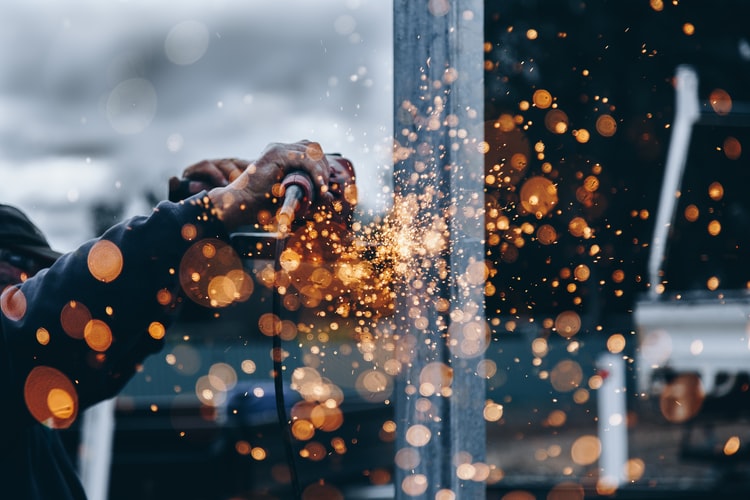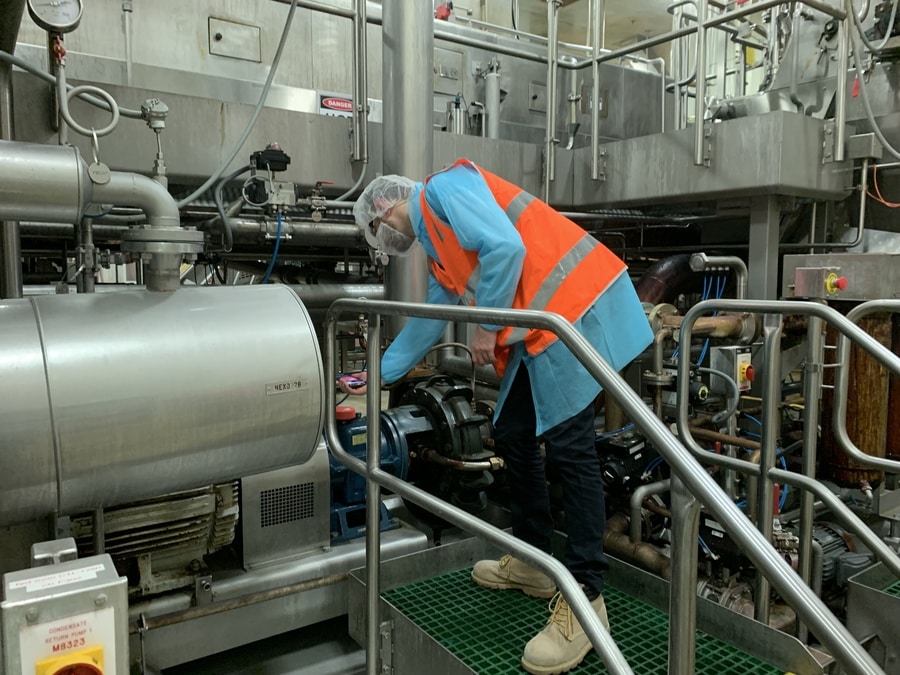Who's afraid of cloud based maintenance platforms?

In this article we discuss the concerns of industrial organisations when evaluating internet-based maintenance technology.
Shifting to predictive maintenance brings massive improvements in asset health, equipment uptime, and general productivity. Facilities can generally expect to gain 30-40% in savings over reactive maintenance strategies. And 8-12% over preventative asset health management. With these improvements, it’s not surprising that predictive maintenance has gained ground. One study found that 65% of maintenance personnel use it.
And yet, the most effective asset health strategy is still far behind when it comes to industry adoption. Internet-based maintenance was found to be used at only 5% of facilities just a few years ago - and it hasn't significantly changed since then.
Applying the IIoT and internet-based maintenance opens the door to improving asset fitness with greater computing power and advanced data analytics. So why the hold up?
Maintenance personnel aren’t inherently technophobic - we know this. However, it's apparent that the resistance to internet-based maintenance is based on a handful of reservations and practical hurdles. These centre around personnel skill, integration with existing IT systems, net security, and demonstrable ROI.
The Personnel Problem
Industrial maintenance has a personnel problem. To begin with, there aren’t enough skilled workers available to fill open positions. But this isn’t just a minor labour deficit. The workforce has serious HR management issues. Relatively poor training, lack of retraining and upskilling, not enough staff, not enough in-house expertise, along with poor industry knowledge capture and transfer are some that spring to mind.
These issues are persistent. They’ve been reported in studies since at least 2010 and the problem hasn’t improved much. The industries that we deal with are certainly getting better at addressing these issues - but there is still a long way to go.
Upskilling the Workforce
Upskilling the workforce takes a three-pronged approach that addresses internal training, knowledge capture, and skilled labour recruitment.
New certificates and training courses can bring existing personnel up to speed with Maintenance 4.0.
Available courses include:
- IIoT Certifications
- Smart Factory Training Certifications
- Industry 4.0 Professional Certifications
- Industry 4.0 Digital or Data-Driven Maintenance
- Updated Maintenance Management Professional Certifications
Offering employer-sponsored training courses is another way to recruit new personnel interested in higher-skilled work.
In the light of the Industry 4.0 movement, maintenance careers should be presented to those enteringthhe workforce as connected, technology-centric, engaging work. With this value proposition, digitally skilled recruits can also be recruited from other industries.
But, finding skilled personnel is only one part of the problem. The next is bringing legacy asset health management and maintenance systems up to speed.
Integrating Data and Legacy IT Systems
Existing data historian software, CMMS, and EAMs solutions generally weren’t developed with Industry 4.0 in mind. A prime concern is making these legacy IT systems work with cloud-based, predictive maintenance solutions.
Also of note is that those organisation not currently engaging in real-time equipment monitoring often point to data standardisation and portability issues as a concern. A study by Bain reaffirmed this, finding that concerns around integrating legacy systems were a prime barrier to internet-based maintenance solutions.
Modernising Maintenance Systems
Legacy systems may not have been designed with IIoT in mind. But this doesn’t leave them obsolete or unable to integrate. Providers of IIoT solutions and advanced analytics platforms are considering these issues and developing their solutions with legacy data systems in mind. IIoT systems like MOVUS' can be fully integrated with any core maintenance management systems and enterprise asset management solutions. Data ownership has also been overhauled, allowing users to truly own how their equipment data is collected and used.
Security
The security of internet-based maintenance systems was a significant concern, with around 63% of respondents mentioning it. The rise of industrial cyberattacks would suggest that their concerns are valid. However it is often not the fault of the maintenance tech itself, but rather flaws in internet infrastructure and other elements that have exposed organisation.
The recent Colonial Pipeline ransomware attack is one of the more high-profile ones.
Another example from a few years ago was a major disruption at a German steel mill. They phished their way into the plant’s network using booby-trapped emails and social engineering. Once inside, they had full access to the mill’s entire production and control systems. The hackers purposely mishandled several parts of the plant, disrupting operations to the degree that a blast furnace had to undergo a fast shutdown. This resulted in “massive damage”, and it's certainly been proven that bad actors can do damage in many ways. Industrial cyberattackers have done everything from dumping sewage to tampering with processed foods.
So it's clear that security concerns are valid however many of these are already being addressed by forward-thinking vendors, international bodies and thought leaders. There are frameworks and initiatives in place such the Industrial IoT Consortium’s (IIC) Industrial Internet Security Framework (IISF). The US Government’s National Institute of Standards and Technology (NIST) has its Cybersecurity Framework, with helpful guidelines for maintaining industrial cybersecurity and a trustworthy IoT environment.
It's important to note that in the grand scheme of things significant events are a rarity. But it is important for organisations to seek out maintenance technology vendors that are competent and considerate of these issues.
Evaluating Vendor Competency
Around 60% of organisations have doubts over vendor competency and ability to deliver on promises. Vendor competence and security compliance need to be well managed in Industry 4.0.
Implementing a few vendor risk management (VRM) practices can protect against incompetence or other issues. Every plant should develop a vendor risk assessment policy, to be used during the evaluation process.
Predictive Maintenance Technology Pays Dividends
Despite predictive maintenance’s high ROI, over half of organisations surveyed recently were unconvinced or unaware of the increased ROI that this approach (and its associated tech) can deliver.
If ROI is the final hang-up to IIoT maintenance technology deployment, personnel should be assured that this will bring clear improvements in asset health management. Industry 4.0 digitisation has the potential to unlock $4.5 trillion in value creation by 2025.
McKinsey sees IIoT as an improvement lever. Applying advanced computing power and machine learning’s continuous improvements to predictive maintenance does just that. Industrial sites can see immediate rewards from applying smart analytics to their operations.
There’s a clear case to be made for implementing IIoT-ready, predictive maintenance technology. We prove that proposition every day with our community of users.
Photo by Christopher Burns on Unsplash

